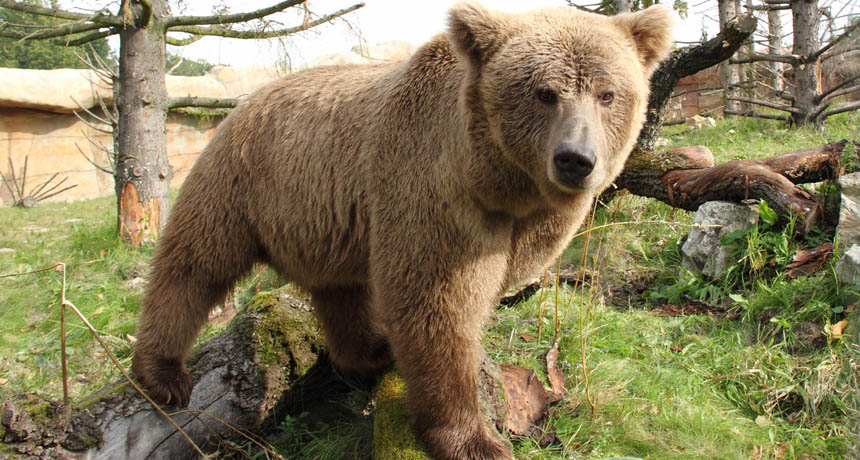Evidence of ‘yeti’ probably came from a Himalayan black bear

Last year, scientists reported they had found evidence of an unknown species of bear in the Himalayas that could be the long-sought “yeti” or “Bigfoot.” But a new analysis says that the animal hairs probably came from rare, endangered Himalayan black bears.
Zoo Hluboka/Wikimedia Commons (CC-BY-SA 4.0)
- More than 2 years ago
In 1954, the British Daily Mail newspaper sent a scientific expedition — along with embedded reporter Ralph Izzard — to the Himalayas. Their mission: Track down a yeti.
The zoologists found some interesting animals, including a new species of vole. A scout for the team heard a story from someone who said that he’d seen a yeti just a few months earlier. The creature was “a small, squat beast, the size of a teenage boy, covered with stiff red-brown and black hair, a flat face like a monkey, no tail, and normally walking on two legs.” The full expedition team later found some tracks and hair, and saw something that looked much like a bear.
In the end, nothing was conclusive, but it also wasn’t enough to end the search for the elusive beast also known as Bigfoot and the Abominable Snowman. The search has continued ever since.
Last year, Oxford University geneticist Bryan Sykes and colleagues announced that they had found evidence of a mysterious animal in the Himalayas that might be the source of the yeti legend. The beast wasn’t a new species of primate, as had long been conjectured, but a bear. Their evidence was DNA from two small hair samples that matched a short stretch of DNA from the jawbone of a 40,000-year-old polar bear.
Cryptozoologists were ecstatic. “It’s quite exciting,” Loren Coleman, director of the International Cryptozoology Museum in Portland, Maine, told Science News. “This definitely shows there’s DNA in the Himalayas area of an unknown bear.”
Scientists quickly began questioning the findings, though. And now a re-analysis of the genetic data concludes that there is no mystery bear species in the Himalayas. The two hair samples instead match the DNA of the brown bear, Ursus arctos, which is native to the area where the hairs were found. The study appears in the June 16 Zookeys.
Eliécer Gutiérrez of the Smithsonian National Museum of Natural History in Washington, D.C., and Ronald Pine of University of Kansas in Lawrence compared the DNA from the two hair samples attributed to the mystery bear species with that of nearly every known living bear species (except the panda) and two extinct bears.
There were similarities not to the extinct bear species but to the brown bear (U. arctos) and the polar bear (U. maritimus). These two bear species are closely related (which is one reason we can get pizzly and grolar bears), and there is a lot of overlap in their DNA. The mystery bear’s DNA falls within that natural variation, Gutiérrez and Pine found. And since there’s a rare, endangered subspecies of brown bear (U. arctos isabellinus) that lives in the Himalayas, it’s likely that the hair samples came from it, they conclude.
Sykes announced last year that he was planning on following in the footsteps of Izzard and the Daily Mail team on his own expedition to the Himalayas in search of his mystery bear. This week he’s gone quiet on the topic. Gutiérrez and Pine note, though, that such an expedition would be a waste of money and effort. There are at least 16 museum specimens of U. arctos that were collected from the Himalayas. If there really is a mystery bear species roaming that mountainous region, they say, scientists should start their search by heading to the museum.





